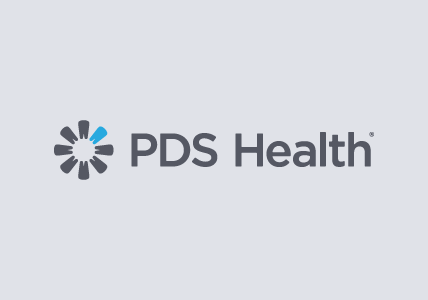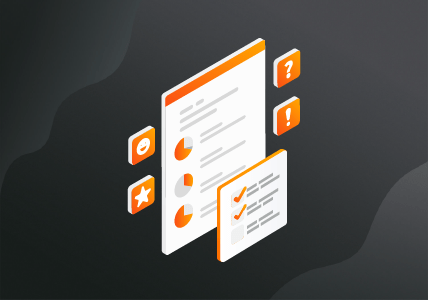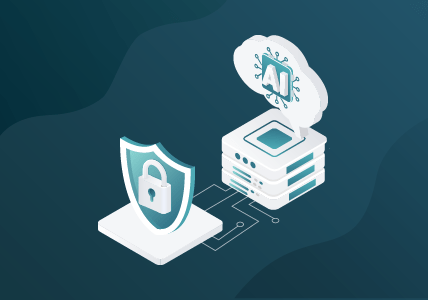In IT and cloud computing, observability delivers deep insights into a system’s internal states and performance through external outputs, gaining a holistic understanding. This holistic understanding is focused on current and trending operating conditions across the digital infrastructure from networking to computing and to cloud, security, applications, and end-user experience. The level of observability in a system correlates with how quickly the root cause of an issue can be identified and resolved, reducing the need for extensive testing and coding efforts.
The term “observability” has its roots in various engineering and control theories, which encompass understanding self-regulating systems. Over time, it has evolved into a critical practice for managing complex software systems. Observability is an essential practice for maintaining the performance, reliability, and scalability of modern software systems. As the threat landscape is quickly evolving and dynamic system architectures increase in complexity and scale, IT teams are facing pressure to respond to these challenging issues across multi-cloud environments. To overcome these complex challenges, enterprises must utilize deep observability to their advantage.
Why Do You Need Observability?
In the realm of highly distributed systems and hybrid cloud, observability empowers cross-functional teams to comprehensively understand and address specific inquiries. It unveils the underlying causes of malfunctions, offering actionable insights for performance enhancement. Through observability, teams receive timely alerts about potential issues, allowing proactive mitigation before users are affected.
Given the dynamic nature of modern cloud environments, numerous challenges emerge, often unforeseen and unmonitored. Observability tackles the dilemma of "unknown unknowns," continually providing visibility into emerging problems and their root cause.
As cloud-native architectures gain traction, organizations seek to embed Artificial Intelligence for IT Operations (AIOps), utilizing AI to automate processes across the DevSecOps life cycle. Integrating AI into tasks ranging from telemetry collection to full technology stack analysis furnishes reliable insights, facilitating automated application monitoring, testing, continuous delivery, security, and incident response.
Observability's value extends beyond IT applications. The collection and analysis of observability data provide precious insights into the business impact of digital services. This visibility enables optimization of conversions, validation of software alignment with business objectives, measurement of user experience SLO outcomes, and informed prioritization of business decisions. When an observability solution harnesses synthetic and real-user monitoring to analyze user experience data, organizations gain the ability to detect issues proactively and design enhanced user experiences grounded in real-time feedback.
Today’s threat landscape is quickly evolving with threat actors more sophisticated than ever. The digital transformation and the prevalence of complex, distributed, and interconnected systems have given rise to the need for real-time insights into the behavior and performance of these systems. Organizations will need to use observability for:
- Troubleshooting
Organizations need observability to detect and diagnose issues. This allows teams to monitor their software systems and quickly detect anomalies, performance bottlenecks, and errors. The real-time data from observability enables teams to proactively diagnose and troubleshoot issues more effectively. - Improve Reliability
With observability, teams can continuously monitor and analyze system behaviors to enhance the reliability and availability of their services. This allows proactive identification of issues before they impact end-users. - Fast Processing
Observability data provides valuable insights into system performance metrics. This data can be used by organizations immediately to optimize resource allocation, improve response times, and overall improve user experience. - Capacity Planning
Organizations can analyze trends and pattern usage to make informed decisions about resource scaling and capacity planning. - DevOps and Collaboration
Observability fosters collaboration between development and operations teams by providing a common platform for insights and data sharing for addressing issues. - Continuous Improvement
Data from observability helps organizations gain a deeper understanding of behaviors to drive data driven decisions for continuous improvement of operations.
Is Observability the Same as Monitoring?
Although observability and monitoring are closely related and can complement one another, the two are not the same. With monitoring, teams will typically preconfigure dashboards to alert them once a performance issue occurs. To do so, this requires teams to already know what problems will occur before they've even encountered them. Monitoring is a very reactive method and isn’t suitable for cloud native environments where issues are complex and dynamic. This means teams will be unable to know in advance what type of issues might occur.
Observability on the other hand is proactive because the data offers insights within the whole environment internally and externally. Observability data is suited for exploring and finding the root cause quickly before it becomes an issue. This allows complete visibility of complex issues that may have not been anticipated beforehand.
How Does Observability Work?
Observability continuously gathers four performance telemetry data types by seamlessly integrating with the pre-existing instrumentation present in application and infrastructure components. Additionally, these platforms offer tools that enable the easy addition of instrumentation to these components, ensuring a comprehensive and ongoing collection of data. The four primary telemetry types are:
- Metrics
Metrics are measures of internal behavior and performance of complex systems. They offer insights into system health, resource usage, how much memory or CPU capacity an application uses, or how much latency an application experiences during a spike in usage. - Events
Events capture the interconnected relationships between system components, facilitating tracking of data flow, interactions, and performance. This holistic perspective aids in understanding system operations for issue detection and resolution. - Logs
Logs are structured records of events and actions within the system that provides insights into its behaviors. These logs are a crucial component of observability that offers chronological record of activities, errors, changes, aiding in issue detection, troubleshooting, and performance optimization. By analyzing these logs, organizations gain visibility into the system’s health to enable proactive decision making. - Traces
Traces record every single record of activities and interactions within every user request. They provide detailed insights into how components communicate and perform, helping identify bottlenecks and errors.
However, while metrics, events, logs, and traces (MELT) provide an application-focused or top-down view of system operations, they may not offer insights into network-related issues without understanding network activity. This is where solutions like Gigamon come into play, providing network-derived intelligence and complete performance management. Gigamon helps bridge the gap between application performance and network behavior, enabling a comprehensive understanding of system operations and facilitating effective issue resolution.
What are the Benefits of Observability?
- Complete Visibility into Unknown Issues
Observability uncovers and detects unknown issues beyond your awareness. Unlike monitoring tools that focus on anticipated problems, observability reveals unexpected conditions, tracing them to performance issues and aiding swift resolution. - Early Issue Resolution
Observability integrates monitoring into early software development stages. DevOps teams preemptively identify and rectify new code issues, preventing customer experience disruption and ensuring SLAs are met. - Seamless Scalability
Automate observability scaling. Define instrumentation and data collection within Kubernetes configurations for immediate telemetry from cluster setup to teardown. - Automated Recovery
Integrate observability with AIOps and automation to predict and autonomously address issues. Machine learning predicts problems based on system behavior, initiating remediation without manual intervention. - End User Experience
Directly contributes to improving end user experiences by ensuring smoother performance, quicker issue resolution, proactive problem prevention, and the ability to tailor products and services to user preferences. - Business Analytics
Empowers real-time tracking and analysis of intricate system behaviors, yielding insights into customer interactions, operational efficiencies, and emerging trends. This enables data-driven decision-making, optimized resource allocation, and enhanced user experiences to respond to evolving demands.
Observability is an essential component of any organization and encompasses many benefits to help understand complex issues with an observable system. Overall, it creates an environment that is easier to monitor, safer to update new code, and easier to respond to and repair. Observability directly supports Agile, DevOps, and SRE teams with delivering high quality and faster software.
Components of Observability
To achieve observability, proper tools are crucial for collecting relevant telemetry data from your systems and applications. Creating an observable system involves developing your own tools, utilizing open-source software, or investing in a commercial observability solution. The implementation of observability generally entails four key components:
Instrumentation
These measurement tools gather telemetry data from various components, such as containers, services, applications, and hosts, ensuring comprehensive visibility across your entire infrastructure.
Data Correlation
Collected telemetry data undergoes processing and correlation, establishing context and enabling automated or customized data curation for generating time series visualizations.
Incident Response
Incident management and automation technologies ensure timely delivery of outage data to the appropriate individuals or teams based on on-call schedules and technical expertise.
AIOps
Utilizing machine learning models, AIOps aggregates, correlates, and prioritizes incident data, reducing alert noise, identifying potential system-impacting issues, and expediting incident response.
By strategically integrating these components, organizations enhance observability, leading to better insights, more efficient incident management, and improved system responsiveness.
Getting Started with Observability
In conjunction with MELT's top-down perspective, Gigamon technology ensures that every crucial detail, spanning physical or virtual networks, cloud services, or applications, is efficiently collected and seamlessly delivered to monitoring and analytics tools. By amplifying observability with intelligent traffic filtering, transformation, and forwarding capabilities, Gigamon empowers IT teams to not just monitor but to deeply understand and optimize their infrastructure. This profound understanding facilitates informed decision-making, swift troubleshooting, anomaly detection, and ultimately, the enhancement of operational efficiency and user experiences.
Take a Gigamon Tour
See the tech. Touch the tech.







